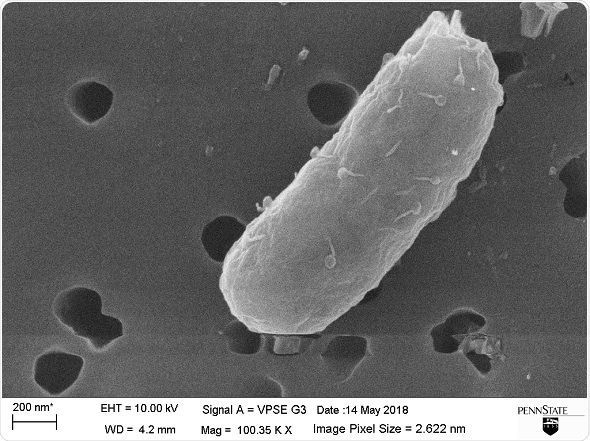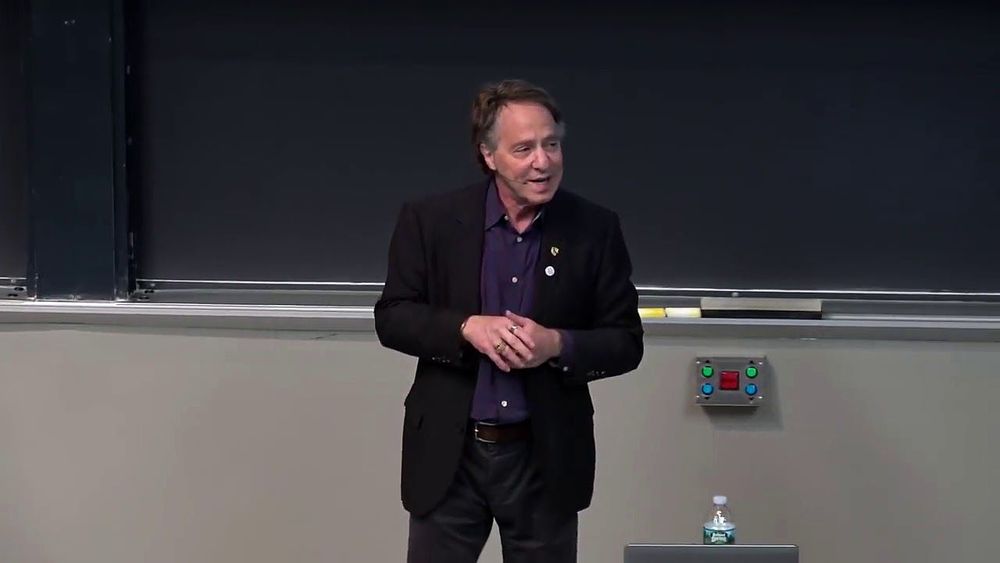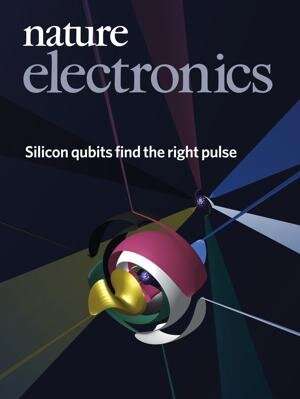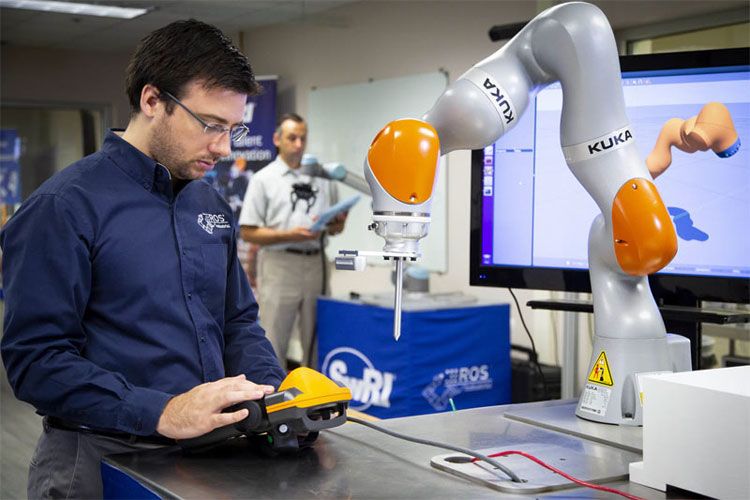Page 8195
Apr 17, 2019
Age-related memory decline reversed with magnetic pulses to the brain
Posted by Genevieve Klien in categories: life extension, neuroscience
Researchers at Northwestern University have used a non-invasive form of magnetic brain stimulation to improve the memory of older adults. After just five short sessions the older adults scored as well as a younger cohort on a variety of memory tasks.
Apr 17, 2019
Radical Environmentalism and Transhumanism: Symptoms of the Same Disease
Posted by Zoltan Istvan in categories: biotech/medical, evolution, geopolitics, life extension, singularity, transhumanism
A new story on my latest article from #transhumanism critic Wesley J. Smith:
Oh my. Two of contemporary society’s most prominent anti-human utopian movements — radical environmentalism and materialistic transhumanism — appear on the verge of a bitter showdown.
When you think about it, that makes sense. Both movements see themselves as the future’s only hope. But their core purposes are incompatible. Radical environmentalists — “nature rights” activists, deep ecologists, Gaia theorists, and their fellow travelers that elevate nature above humanity — hijacked and refashioned traditional environmentalism into a mystical neo-earth religion that disdains homo Sapiens as a parasitical species afflicting the earth. These radicals hope to thwart our thriving off the land in order to “save the planet.” Indeed, I sometimes believe that if they could, they would forcibly revert our species to hunter/gatherers — without the hunting part.
Continue reading “Radical Environmentalism and Transhumanism: Symptoms of the Same Disease” »
Apr 17, 2019
Bacteria use viruses for self-recognition, study reveals
Posted by Xavier Rosseel in category: biotech/medical
Bacterial cells that normally colonize our guts can distinguish themselves from other bacterial species using what’s traditionally considered their enemy—a virus. Researchers report April 16 in the journal Cell Reports that some bacteria use viruses that have infected them (i.e., phages) for self-recognition and thereby show greater fitness, repelling competitors that lack this adaptation.

This is the first evidence that cells can distinguish themselves from related competitors through the use of a virus. The implications are that we should re-evaluate the relationship between a virus and its cellular host in that there are sometimes benefits to having a viral infection.”
Continue reading “Bacteria use viruses for self-recognition, study reveals” »
Apr 17, 2019
Yale scientists restore brain function of 32 dead pigs
Posted by Paul Battista in categories: biotech/medical, life extension
Yale is making waves. They have had great Research papers over the past 3 years. Some of which has proven my constant words now for two decades that we have a pandemic plague that attacks our individual Eukaryotic cells the day long causing What AEWR Has named the Senesonic plague the disease we have called aging. Respect r.p.berry & AEWR https://adamandevewordresearch.blogspot.com/
The researchers did not hail from House Greyjoy — “What is dead may never die” — but came largely from the Yale School of Medicine. They connected 32 pig brains to a system called Brain Ex. Brain Ex is an artificial perfusion system — that is, a system that takes over the functions normally regulated by the organ. Think a dialysis machine for the mind. The pigs had been killed four hours earlier at a U.S. Department of Agriculture slaughterhouse; their brains completely removed from the skulls.
Brain Ex pumped an experiment solution into the brain that essentially mimic blood flow. It brought oxygen and nutrients to the tissues, giving brain cells the resources to begin many normal functions. The cells began consuming and metabolizing sugars. The brains immune system kicked in. Neuron samples could carry an electrical signal. Some brain cells even responded to drugs.
Continue reading “Yale scientists restore brain function of 32 dead pigs” »
Apr 17, 2019
Ray Kurzweil — Biotechnology and AI
Posted by Montie Adkins in categories: biotech/medical, life extension, Ray Kurzweil, robotics/AI

https://www.youtube.com/watch?v=tY2APj5UEsw&feature=share
There is a link to the full vid. “Life extension escape velocity in 10 years.” Here is currently my favorite go to link in support of this potential: https://www.nextbigfuture.com/2019/01/delivery-of-45-age-rev…eview.html
Apr 17, 2019
World-record quantum computing result for Sydney teams
Posted by Genevieve Klien in categories: computing, quantum physics
A world-record result in reducing errors in semiconductor ‘spin qubits’, a type of building block for quantum computers, has been achieved using the theoretical work of quantum physicists at the University of Sydney Nano Institute and School of Physics.
The experimental result by University of New South Wales engineers demonstrated error rates as low as 0.043 percent, lower than any other spin qubit. The joint research paper by the Sydney and UNSW teams was published this week in Nature Electronics and is the journal’s cover story for April.
“Reducing errors in quantum computers is needed before they can be scaled up into useful machines,” said Professor Stephen Bartlett, a corresponding author of the paper.
Continue reading “World-record quantum computing result for Sydney teams” »
Apr 17, 2019
Biophotonic Therapy Can Destroy Bacteria and Viruses in Organs Before Transplantation
Posted by James Christian Smith in category: biotech/medical
S\xC3O PAULO, April 16, 2019 — A new technique for decontaminating organs before transplantation using UV and red light irradiation has been developed by researchers at the São Paulo Research Foundation (FAPESP) in partnership with the University of Toronto. The biophotonic decontamination technique, which was initially developed to decontaminate lungs with viral infections such as hepatitis C, could help prevent transmission of diseases to organ recipients and increase the number of transplants.
Apr 17, 2019
Robotic Machine Vision Solution Can Process Shiny Objects
Posted by James Christian Smith in category: robotics/AI
A solution that enables industrial robots to scan and manipulate metallic objects that are too “shiny” for machine vision to process has been developed by Southwest Research Institute (SwRI) and ROS-Industrial, the industry consortium initiated by SwRI in 2012 to support cost-shared applied R&D for advanced factory automation. The project integrates intelligent part reconstruction using the second generation of the Robot Operating System (ROS2) framework to improve 3D image perception when robots autonomously sand and finish parts.
ETH spin-off Archilyse promises nothing less than the “world’s most comprehensive architecture analysis” on its website. The young entrepreneurs are attracting a lot of interest in the real estate sector.
Is a four-room apartment family-friendly or more suitable for a couple? How can office space be optimally divided so that its users feel comfortable? Archilyse helps to answer these kinds of questions. Based on address information, floor plans and 3D models, the ETH spin-off’s platform delivers various simulations and analyses of a property and makes them available to project developers, architects and real estate companies via an interface.
“A young family, for example, might be interested in the soundproofing between the children’s rooms and the living room, whether you can see the play area from the living room and whether the children’s rooms are bright enough to not impair the children’s cognitive abilities,” explains Archilyse founder Matthias Standfest.
















